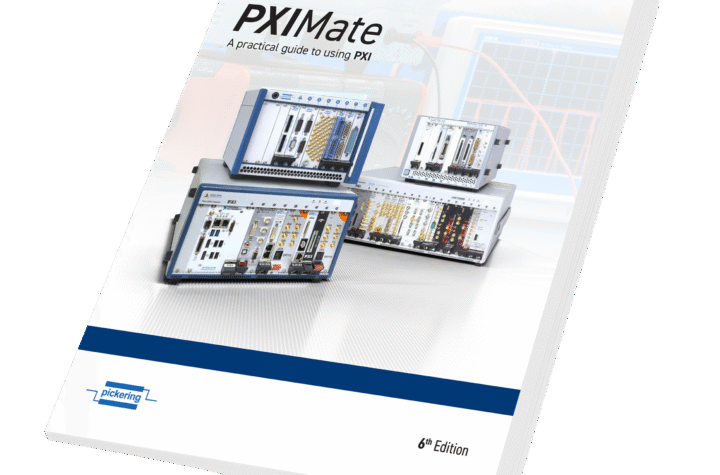

Automotive OEMs are constantly looking for ways to speed up the development of networked cars. A critical components of these cars – the electronic control units or ECUs – need to be developed and tested quicker and more accurately than ever before.
“Electronics continue to infiltrate all aspects of automotive design as consumer demand for safety, performance, fuel efficiency, and reliability continues to grow. Automotive design relies on an efficient exchange of design information across the supply chain. Electronic design incorporates semiconductor, FPGA, PCB, sub-system, system, and software design.
Integrating all these aspects of electronics requires careful attention to component design and system interactions to reduce costs and warranty recalls, meet performance specification, and enhance vehicle reliability,” says the US$1.4-billion Synopsys.
The California-headquartered company supplies software, IP and services used in semiconductor design and manufacturing. Earlier in 2011, Mazda chose a Synopsys solution to verify its ECUs. “We selected Synopsys’ CoMET-METeor virtual prototyping solution because of its cycle-accurate modeling and high-speed simulation capabilities”, says Hisayoshi Naito general manager, vehicle development division, Mazda. The design tool is used by Mazda to create accurate models for normally dangerous live tests and difficult to reproduce conditions, and to enhance levels of safety, reliability and quality.
Synopsys says Mazda will save time and costs by decreasing the number of tests on real automobiles and hardware-in-the-loop simulation (HILS) test equipment. Virtual prototyping is used to develop and debug designs in the pre-silicon environment months. “Today’s automotive makers struggle with the added complexity of millions of lines of software code affecting everything from energy use to safety features. Achieving system validation and software development earlier in the flow and with higher quality is crucial to an automobile’s success in the end market,” says John Koeter, vice president of marketing for the Solutions Group at Synopsys.
Automotive Industries (AI) spoke to Marc Serughetti, product marketing director, Synopsys, and asked him what challenges face ECU developers.
Serughetti: OEMs are rallying to position themselves for the four automotive megatrends – safety, environment, connectivity and mobility for everyone. In the context of those trends, OEMs are differentiating with the user experience provided to end customers, provide improved functionality for similar cost and have to navigate a complex landscape of governmental regulations. They have to manage the care complexity and quality at the vehicle level and meet the legislative requirements.
Their Tier 1 suppliers are facing high price pressures, have to deal with demands for high quality measured with standards like ISO26262, and are trying to innovate within an increasingly networked environment and interfaces to other systems in the car. IC suppliers are facing significant price pressures combined with high quality requirements and innovation at the system level.
Overall, the increased software content, combined with concerns around safety and design robustness, requires to start development as early and prototyping of systems in hardware requires augmentation by virtualizing significant portions of the development process, from architecture design through early software development, power and network design, combined simulation of the mechanical and electronic worlds and eventually hardware/software integration and software testing.
AI: What progress is being made in the development of reliable advanced software apps that provide flexibility across platforms?
Serughetti: Some feature like “where is my car?”, “remote diagnostics”, “cabin climate conditioning” or “telling my navigation system to look up my last Google maps search” can be implemented today. Other attractive apps, like the virtual valet, will require more technology advances like autonomous driving to find adoption first. Apps are somewhat shielded from the actual hardware using abstraction layers like operating systems. Just like Android for wireless and consumer application domains, AUTOSAR provides in automotive the necessary abstraction to enable applications to be developed independently from the hardware. In theory that enables interoperability and flexibility across platforms and allows the level of testing, which eventually increases reliability.
AI: How do you see the automotive industry adapting to standards like AUTOSAR?
Serughetti: Some regional intricacies aside, we see adoption of AUTOSAR across the board with OEMs requiring it for most new ECU developments – if not all. Adoption will require better coordination amongst the development community. Just like in the early days of Linux and Android, a variety of parallel versions and incarnations do exist. Agreeing on the appropriate AUTOSAR versions will be crucial to enable the desired effects of openness and flexibility across platforms.
AI: What solutions does Synopsys offer automotive electronics designers and developers?
Serughetti: We offer a comprehensive set of development solutions for OEMs, Tier 1s and semiconductor providers. With complexities continuing to grow at the rates they do, reuse has become essential. We offer pre-defined building blocks for both software and hardware. Good examples are our SONIC Focus software building blocks to enhance the passenger audio experience, and the building blocks which accelerate semiconductor development – the industry refers to them as Semiconductor IP.
Great examples here are our offerings in the area of Ethernet, which includes the latest AVB capabilities for Audio Video Broadcasting via Ethernet. Our USB and SATA offerings are accelerating chip development, especially in the infotainment domain. Our embedded memory solutions together with our ARC processors round up the IP portfolio.
On the development tools side, we provide AUTOSAR-aware software analysis to enable OEMs and Tier 1s to assess different mappings of their software into target hardware architectures. Our virtual prototypes are used for the development of software, for software testing and hardware software integration task. FPGA prototyping plays a role here too. The virtual prototypes representing the electronics of the ECU, can be connected to our mechanical simulation solutions as well to for example allow co-simulation of the mechanical motor combustion effects in our Saber products in conjunction with the actual software running on an ECU simulation in our Virtualizer product. Finally, the Saber products are used for network design, power design and wire harness design – i.e. for the system-aspects at the OEM side.
Bottom line – most of our tool technologies strive towards virtualization of the development process. Instead of waiting for hardware prototypes, Synopsys products augment those flows with simulation techniques, virtualizing the development flow, achieving better time to market, more testing and increased product robustness.
AI: Tell us your company’s work in embedded electronics solutions.
Serughetti: As a development tool provider, we are mostly an enabler. Besides our semiconductor IP for interfaces, processors and peripheral components, which directly play in embedded systems, our tools enable embedded development – from the early portioning tasks using architecture design, through software development on virtual prototypes to hardware/software integration on FPGA prototypes – to software regression testing and fault injection techniques for ISO26262 compliant testing.
AI: How will the quality of automotive electronics be improved?
Serughetti: Consumer demand for safer, reliable high quality products will only grow, as will government regulations to formalize safety and reliability. Virtualization of more and more of the development processes will become crucial, as it allows more effective, earlier software development and testing, and directly enables compliance for standards like ISO26262.
AI: How important is the automotive business for Synopsys?
Serughetti: With our strong foundation in the chip and systems hardware development markets, as complexity grows we need to serve new, higher levels of abstraction. In this area application specificity becomes much more important. The automotive application domain, along with wireless and consumer applications, is an important area for Synopsys in general, and the Solutions Team in particular.
AI readers can find out more on the Synopsys system-level design blog: “A View from the Top” at http://www.synopsysoc.org/viewfromtop












More Stories
Dürr and GROB concept battery factory uses 50% less production space
DuPont materials science advances next generation of EV batteries at The Battery Show
Cybord warns of dangers of the stability illusion